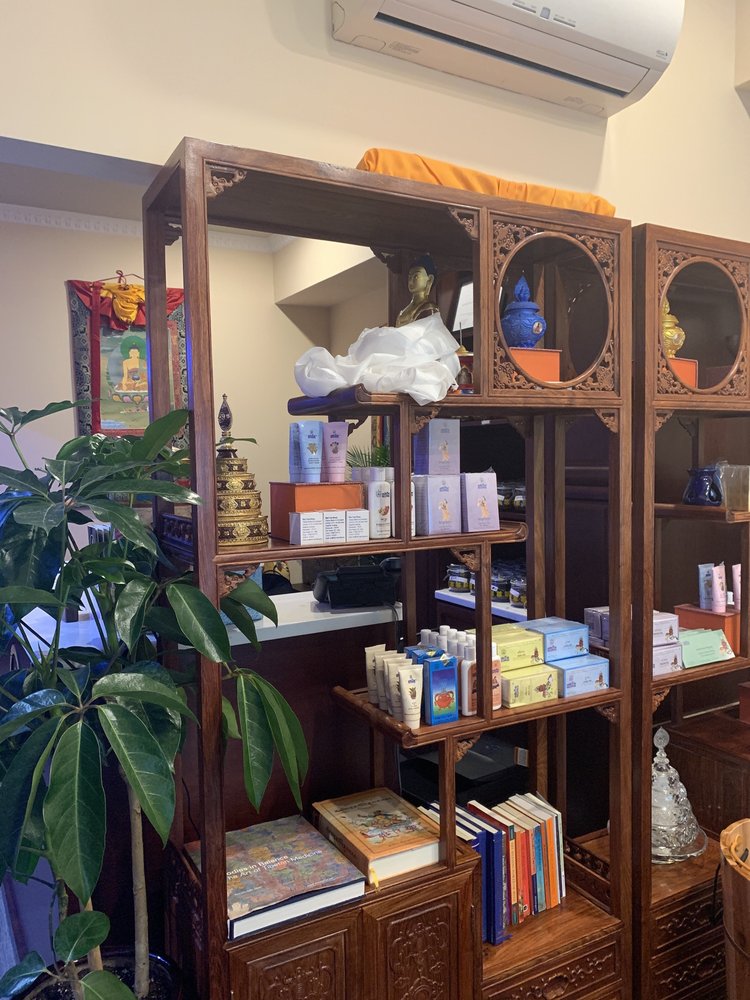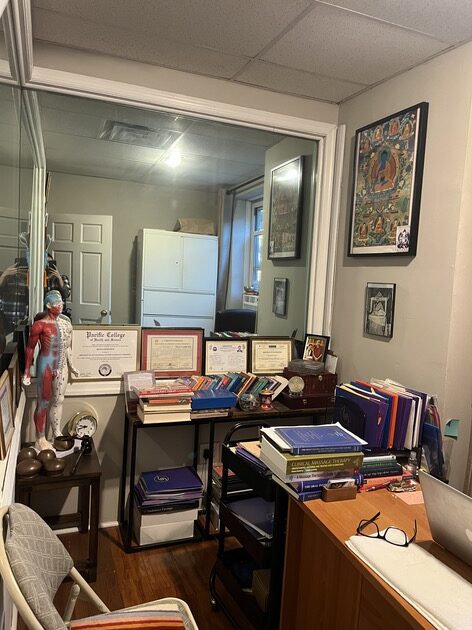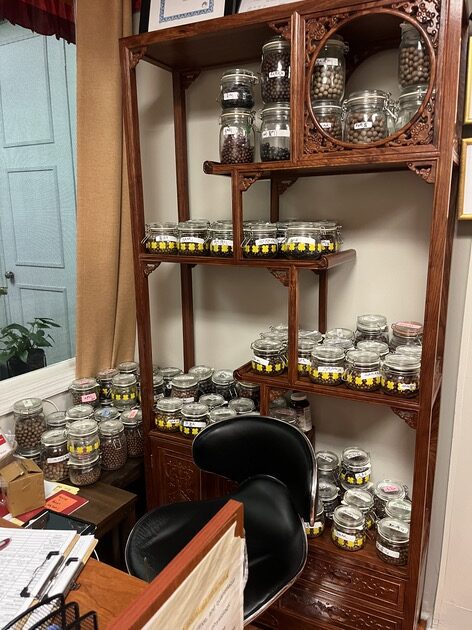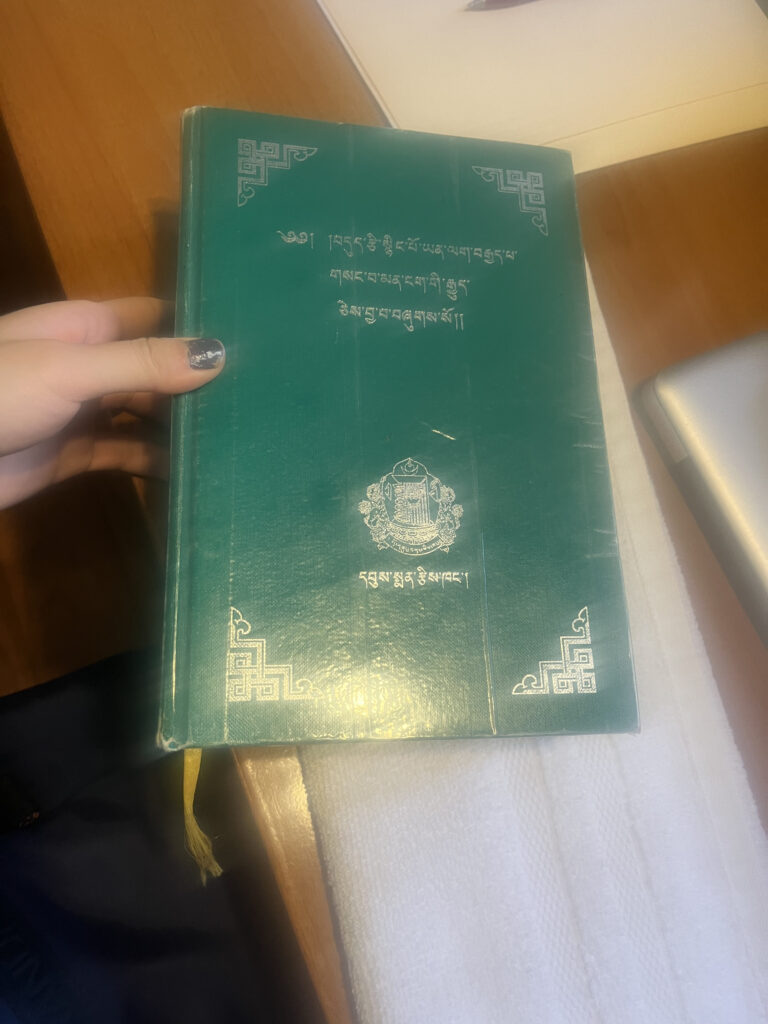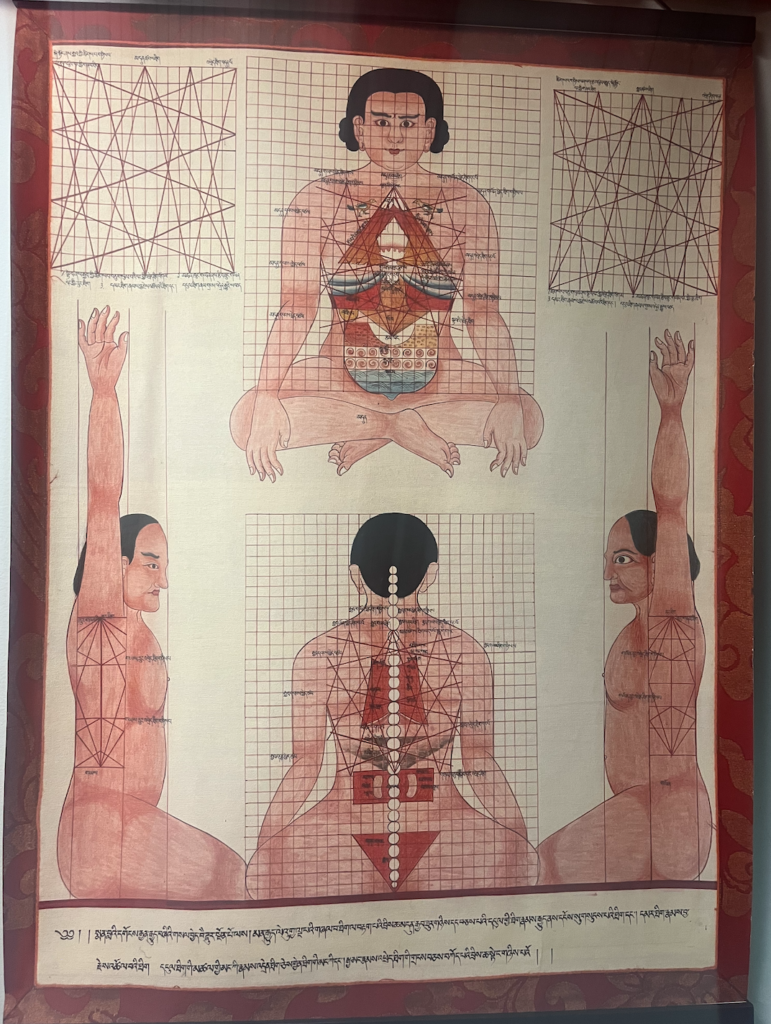By Xingzi Gu
The Kunye Healing Center was established in 2019 in Jackson Heights, Queens, NY. The center is next to the Himalayan Library, which serves as a cultural center for the Tibetan and Himalayan communities of New York City. Dr. Kunga Wangdue works with the library and acts as the main physician at the Kunye Healing Center, providing consultations and treatments based on Traditional Tibetan Medicine (TTM; Fig. 1). The Center provides Tibetan herbal medicine, aromatherapy, medicated full body baths, foot steam baths, hormé therapy, cupping therapy, and Tibetan kunyé massage (sku mnye).
Dr. Kunga was born and raised in Tibet. Upon finishing primary school, he became a monk and studied Buddhism at different monasteries, learning Buddhist prayers and philosophies. He became interested in Tibetan medicine during his studies, learning and memorizing primary medical texts such as the Four Tantras (Rgyud bzhi). Dr. Kunga explains that Tibetan medicine involves both Buddhist philosophy and healing methods, and he therefore considers Tibetan medicine to be a form of both Buddhist and medical practice. He began professionally practicing medicine around 1997 first in India and then in the United States, offering general consultations, herbal baths, and massages (Fig. 2).
Dr. Kunga offers a range of medicinal compounds at the clinic (Fig. 3). Most of the plants that are used to make these compounds need a specific altitude, weather, and soil to grow properly, and so 80–90% of the herbs come from the Himalayan mountains. The medicines that Dr. Kunga prescribes are mostly made in Nepal and India, according to the formulas found in Tibetan medical texts like the Four Tantras (Fig. 4). The Four Tantras has 156 chapters, and covers topics like anatomy, psychology, pathology, pharmacology, rejuvenation, and advice for long-term health.
In the clinic, different illustrations and diagrams for understanding the body according to Tibetan medical theory are hung on the walls. One diagram, for example, maps the physiological location of the five elements, which are earth, water, fire, wind, and space, along with sites for moxibustion therapy (Fig. 5). In addition to the five elements, Tibetan physicians diagnose disease according to the three humors of wind (rlung), bile (mkhris pa), and phlegm (bad kan).
Aspects of Buddhist philosophy are also incorporated into the healing process at the Kunye Healing Center. Dr. Kunga says that physicians and patients must consider the role of mind and consciousness when considering health and disease. Maintaining physical health, in other words, has a lot to do with how you think, which is where Buddhist teachings assist in the healing process. Dr. Kunga is also aware of his own energy level and, when he feels negative, he does not see patients, as this would affect the treatment.
Dr. Kunga has been learning and working with the local Tibetan community of New York for many years. His clinic is clean and cozy, and there is Tibetan music playing in the background that relaxes his patients. The Kunye Healing Center would be an ideal place for anyone seeking alternative treatment and interested in Traditional Tibetan Medicine.

